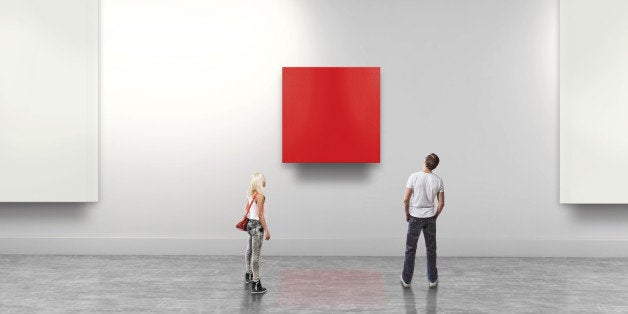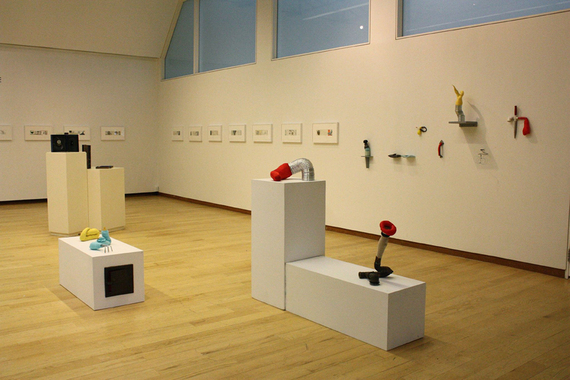
"How do you put a price on a piece of art? Is it different for different forms of art? I'm specifically interested in paintings. How are paintings priced in general?"
There are essentially four criteria which factor into the price of an artwork: 1) the media of the artwork, 2) the size of the artwork, and 3) the artist's position in the art world and 4) the venue where the artwork is being exhibited.
The artist's position in the art world is probably the most important aspect to consider. Emerging artists haven't developed a name yet, so they can't demand thousands of dollars for a single artwork. The majority of emerging artists will usually sell an oil painting within the $100-$1,000 range. An artist who can sell an oil painting for $30,000 would be considered by most people to be very successful. Then there's the top of the art world where some artists can sell an oil painting for $500,000 and more. These artists are the select few who are internationally renowned and showing at the top museums.
Generally speaking, the most highly priced media is large-scale sculpture. Sculpture that is being sold professionally has to be in a permanent material, such as bronze or stone. Works created in these materials require specialized fabrication processes that can cost the artist thousands of dollars for a single sculpture. After large-sculpture, large paintings tend to be priced the highest. Paintings will always be on the higher end because they are unique objects.
Prints and works on paper are usually priced less than sculpture and painting. Since many copies of the same print exist, several people can own the same print, therefore making each print less valuable. Many painters create companion bodies of work in printmaking, which allows them to have an inventory of work with a more diverse range of prices. For example, if an artist sells a 48" x 48" oil painting for $2,000, a 9" x 12" drawing on paper by that same artist might sell for $200.
Large-scale artworks tend to command higher prices, although there certainly are exceptions for small scale works that are exceptionally labor intensive. Not only are large-scale works more expensive to create because they require more materials, but they also cater to an entirely different kind of patron. The average person who buys a 9" x 12" artwork is usually purchasing the artwork to decorate their home. Most people simply don't have the space to fit a 48" x 60" painting in their living room. The patron who purchases a 48" x 60" painting has to have an extremely spacious residence, and/or be a major art collector.
The venue where your artwork is being shown also determines how you price your work. On the low end is open studios, which is generally a very casual neighborhood event where an artist opens their studio to the public. At most open studios events, anything priced over $50 is unlikely to sell. The crowd at an open studios event is mostly local people who have interest in art, and the purchases they make are usually small impulse buys. When I've done open studios events in the past, I treat the event like a yard sale; works that generally sell are small sketches for $50 and or less. The highest priced work I ever sold at an open studios event was a 36" x 24" charcoal drawing on paper for $90.
By contrast, at a commercial gallery in a big city, pricing an artwork for $50 would never happen. Every gallery is unique, but it's typical for prices at a commercial gallery to begin at around $300 for small works, going up to $20,000 for larger pieces, and even more at the top galleries. You also have to factor in that most galleries take a 50% commission, and that the gallery will likely have a say in determining the price of your work.
So how do you approach pricing your own artwork? Avoid prices that are so low or so high that it becomes embarrassing. When I was director of a college gallery, I worked with a relatively unknown artist who priced his 36" x 48" ink drawings on paper at $55,000 each. All things considered, this price was astronomical. On the other hand, if you saw that same 36" x 48" ink drawing on paper in the same gallery priced at $90, that low price would be detrimental to a visitor's opinion of the artist.
When I price my artwork, I consider the cost of the art materials and the approximate number of hours I worked on the piece. The total cost of art materials can vary tremendously depending on the piece. For example, an oil painting requires that I pay for a heavy-duty wooden frame, canvas, primer, oil paint, brushes, rags, a palette, solvent, etc. By comparison, an ink drawing on paper of the same size costs practically nothing because ink and paper cost very little. Then, I estimate how many hours have gone into the work and multiply that by an hourly rate. (Most artists choose a rate that ranges from $15-$50 an hour.) Between the labor and art supplies, I can usually arrive at a price that comes close to what I think will be appropriate.
Pricing art is always tricky, especially for new artists who don't have a track record. Once you have had the chance to sell your work in a number of contrasting venues, you'll develop a stronger awareness of what's appropriate.
Ask the Art Professor is an advice column for visual artists. Submit your questions to clara(at)claralieu.com

